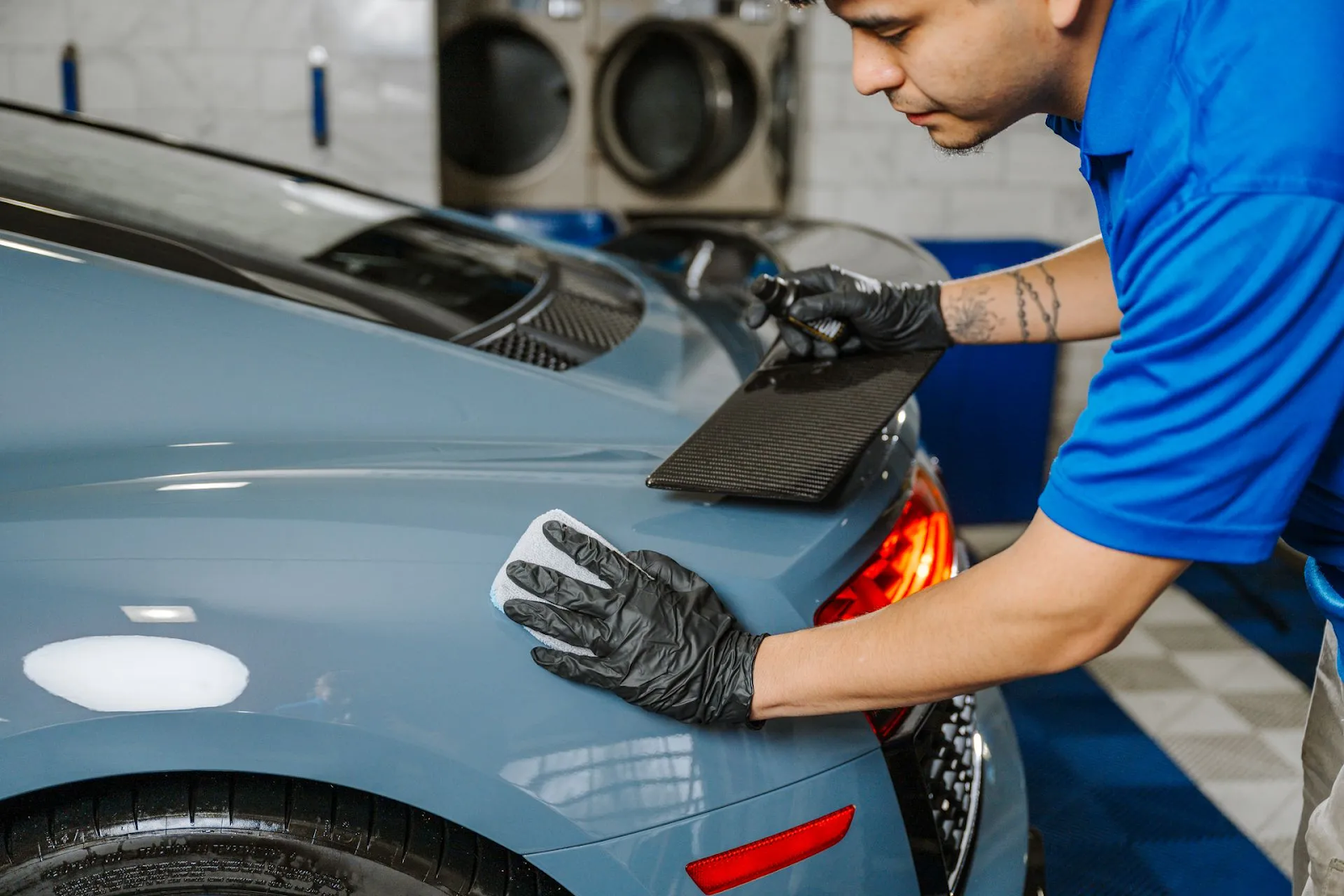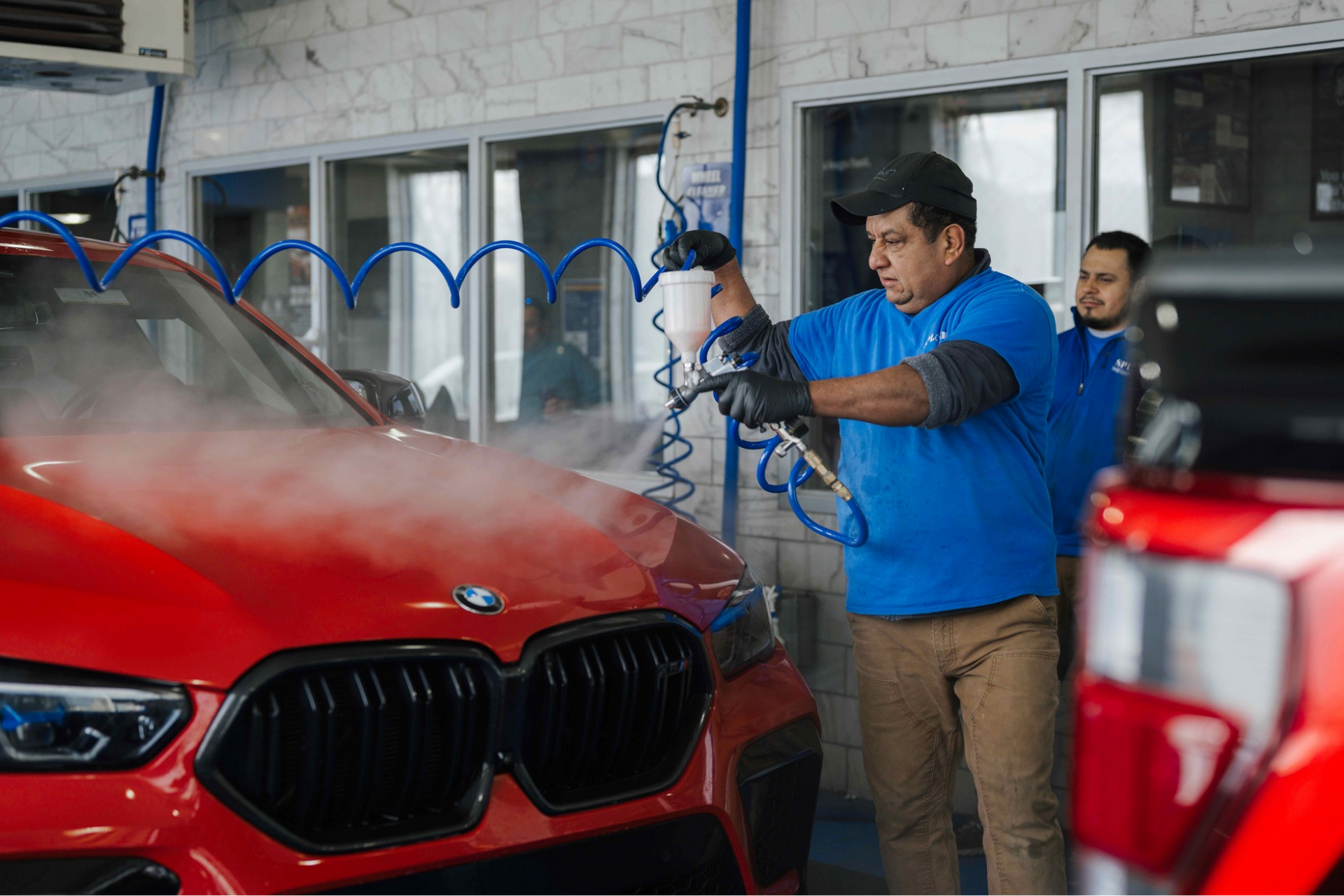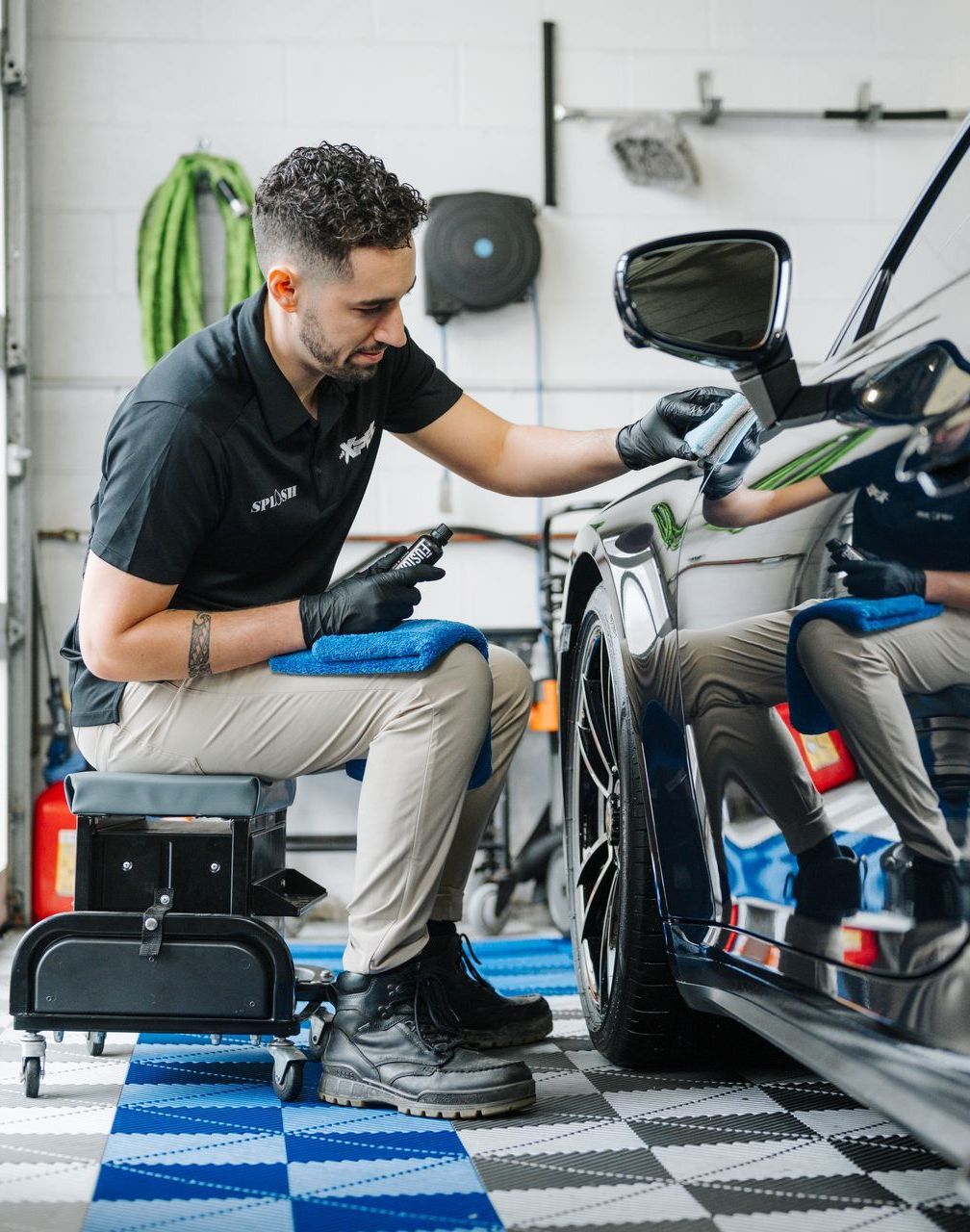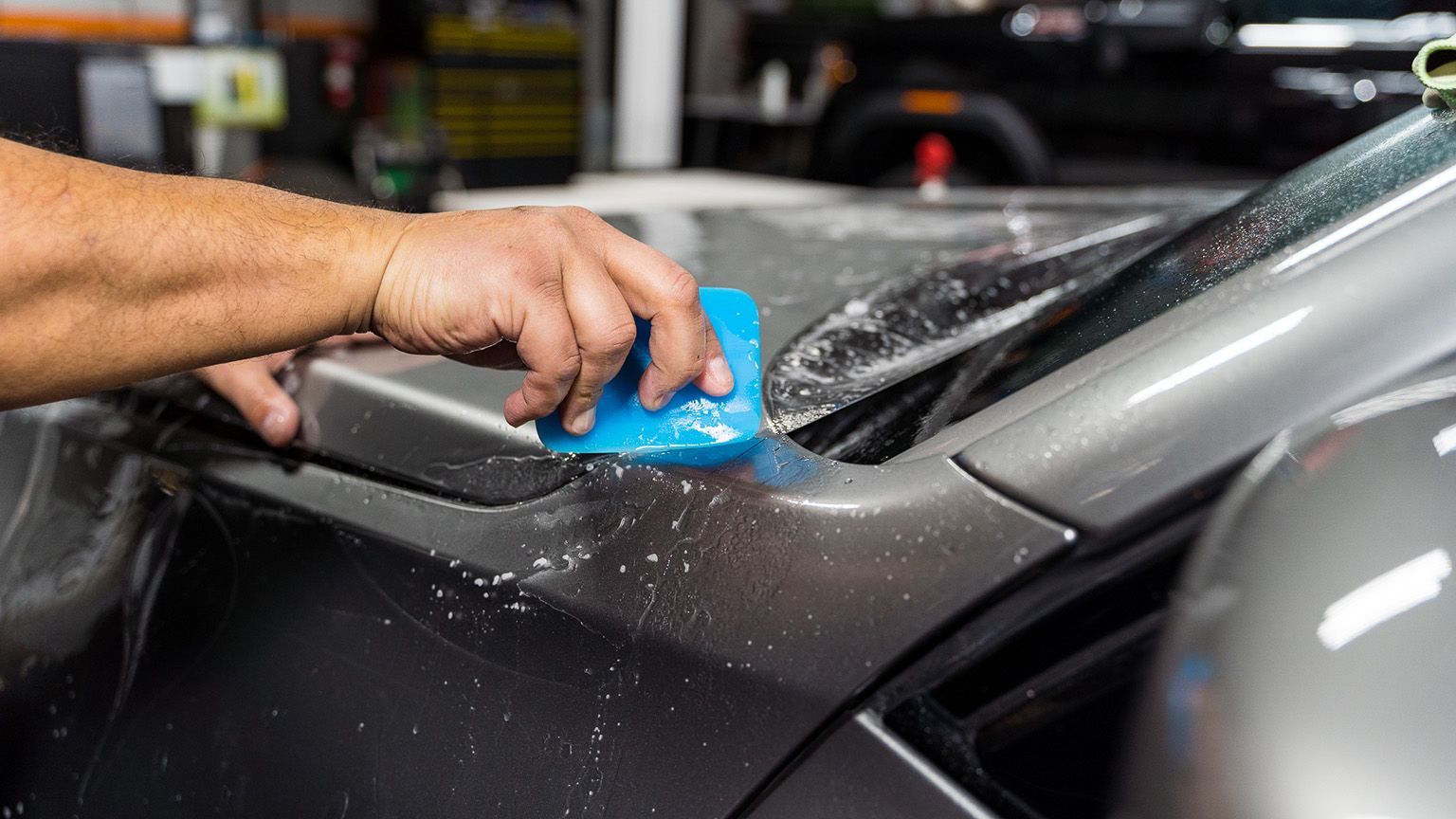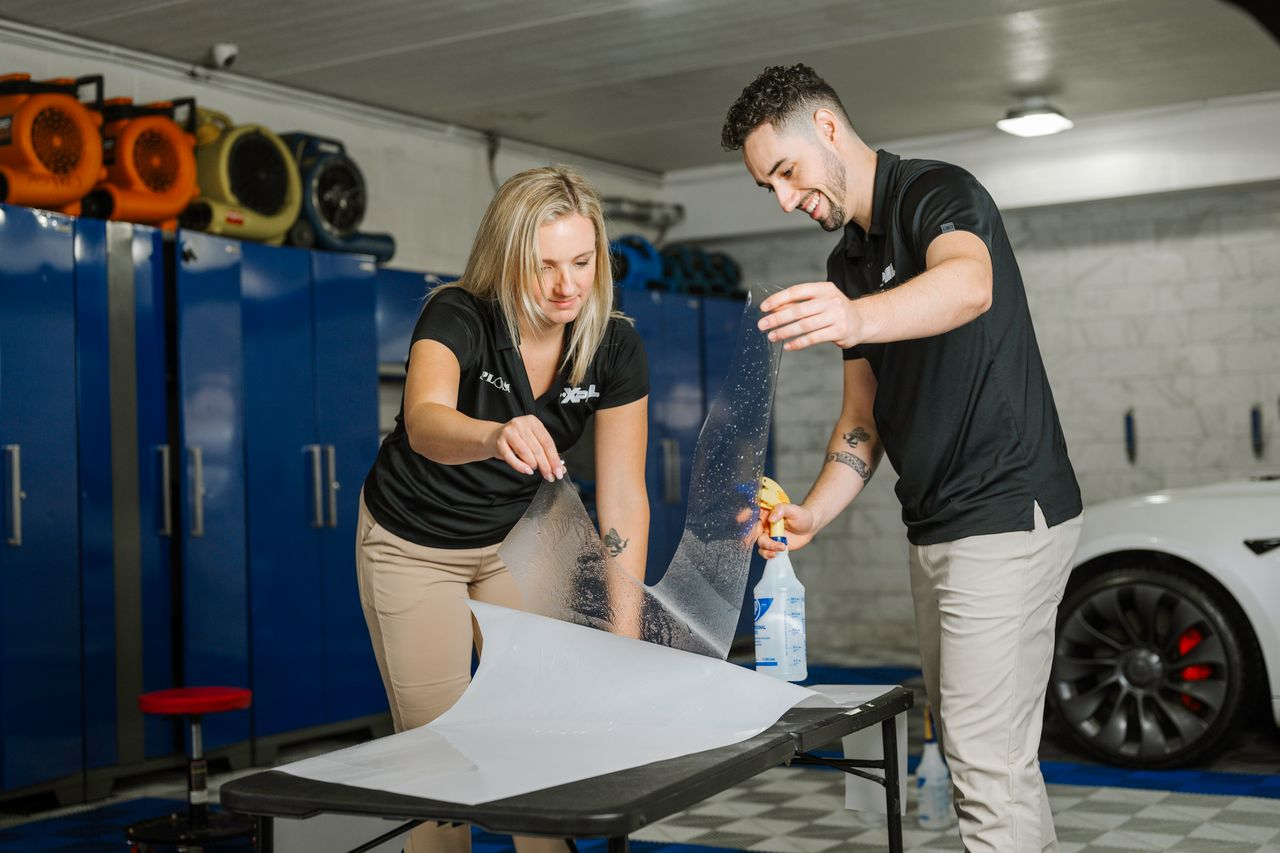You know that feeling when you see a car that just stops you in your tracks? Maybe it's that mirror-like finish that practically glows, or perhaps it's that understated matte look that screams sophistication. Both of those stunning finishes might actually be protected by paint protection film.
If you're thinking about getting PPF for your ride, you've probably wondered about gloss vs matte PPF options. It's not just about protection anymore - it's about making a statement. At Splash Hand Car Wash and Detail, we've installed countless PPF systems, and the finish you choose changes everything about how your car looks and feels.
What Makes Gloss and Matte PPF Different?
The basic difference comes down to how light hits your car's surface. Think magazine cover versus soft-touch book cover.
Gloss PPF maintains your car's original factory shine while adding protection. Light creates crisp reflections and deep color saturation that make your paint pop. It's like your car just rolled off the showroom floor, but with superpowers against rock chips.
Matte PPF scatters light instead of reflecting it directly back. This creates that flat, non-reflective finish that's become super popular recently. You get the same protection, but the visual effect is completely different - more subtle and mysterious.
Both options provide identical protection levels. We're talking high-quality films that handle everything from highway debris to parking lot mishaps. The difference is purely aesthetic.
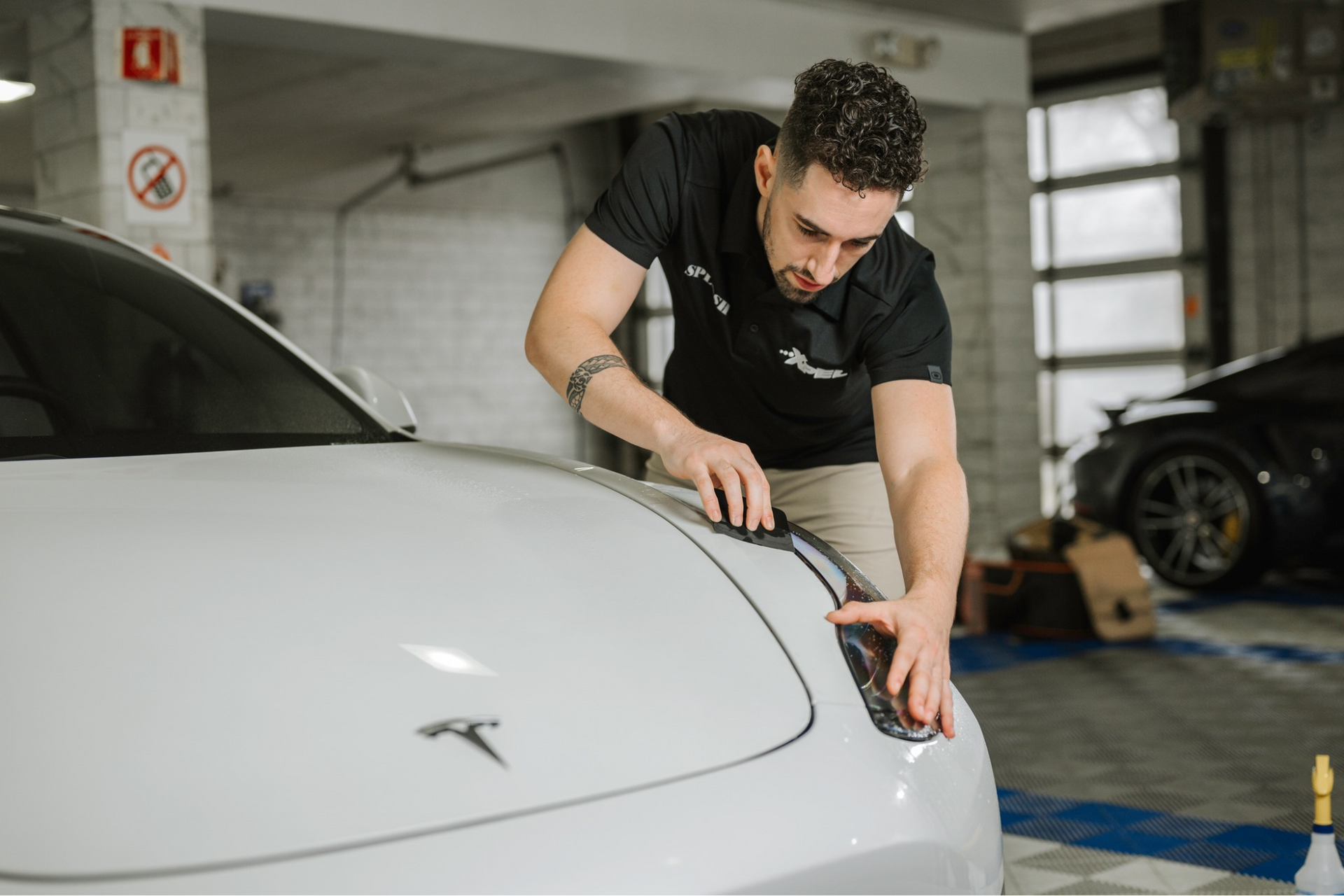
Visual Impact: How Each Finish Changes Your Car
Gloss PPF: The Show-Stopper
When choosing gloss vs matte PPF, gloss means you're doubling down on that head-turning factor. Colors become more saturated, and metallic flakes really come alive. Red cars look like they're on fire. Black cars look like liquid obsidian.
We had a customer bring in a white Tesla Model S last month. After the gloss PPF installation, he texted us from a car meet, saying people kept asking if he'd gotten new paint. That's the power of quality gloss finish.
The downside? Every speck of dust and water spot shows up. You'll wipe down your car more often, but some people actually enjoy that ritual.
Matte PPF: The Understated Rebel
Matte finishes make any car look more expensive and exclusive. There's something about that flat finish that suggests confidence - your car doesn't need to shout for attention.
Dark colors especially benefit from matte PPF. A matte black BMW looks absolutely sinister in the best way. Even lighter colors get this premium, luxury goods vibe. The finish changes throughout the day - bright sunlight shows texture, while dim lighting creates mysterious depth.
Maintenance Reality Check
Both finishes need care, but in different ways.
Keeping Gloss PPF Perfect
Gloss PPF is forgiving with washing and maintenance. You can use most standard car care products without issues. Water spots and dust are more noticeable, so you might wash more frequently. But when you do wash it, the results are immediate and dramatic.
Waxing isn't necessary for protection, but you can add wax or sealant for extra gloss. Just make sure your detailer knows you have PPF installed.
Matte PPF Care Requirements
Matte PPF needs specialized products because regular wax or polish will add unwanted gloss. The upside is that minor imperfections like swirl marks are much less visible. Dust doesn't show as dramatically either.
Never take matte PPF through automatic car washes. The brushes and chemicals can permanently damage the finish. Hand washing or touchless only.
Choosing Based on Your Car's Color
Colors That Love Gloss PPF
Bright colors absolutely sing with gloss PPF. Reds, blues, and yellows get incredible depth. Metallic paints look like they have extra complex layers. White and silver stay crisp and clean, while pearl paints show all their color-shifting properties.
Colors That Work With Matte PPF
Dark colors rule the matte world. Black, dark gray, and navy blue create sophisticated, stealth-like appearances. Surprisingly, lighter colors like matte white have become popular too, creating that high-tech concept car vibe.
Your Lifestyle Matters
Think about how you use your car. Love weekend detail sessions? Gloss might be perfect because you'll see immediate results. More of a "wash when dirty" person? Matte hides imperfections better between cleanings.
Consider your environment, too. Hard water that spots easily? Matte might be more forgiving. Lots of dust or pollen? Gloss might actually be easier because you can see exactly what needs attention.
Professional Installation Makes the Difference
Installation quality matters more than product choice. Poorly installed gloss PPF looks worse than perfectly installed matte PPF, and vice versa.
At Splash Hand Car Wash and Detail, we show you samples in different lighting and discuss maintenance requirements. The best gloss vs matte PPF choice is one you'll be happy with for years. Both films install identically and provide the same protection - only the visual result differs.
Cost Considerations
Both finishes typically cost the same for materials and installation. Real cost differences come in maintenance. Matte requires specialized products that cost slightly more, but you might use them less frequently.
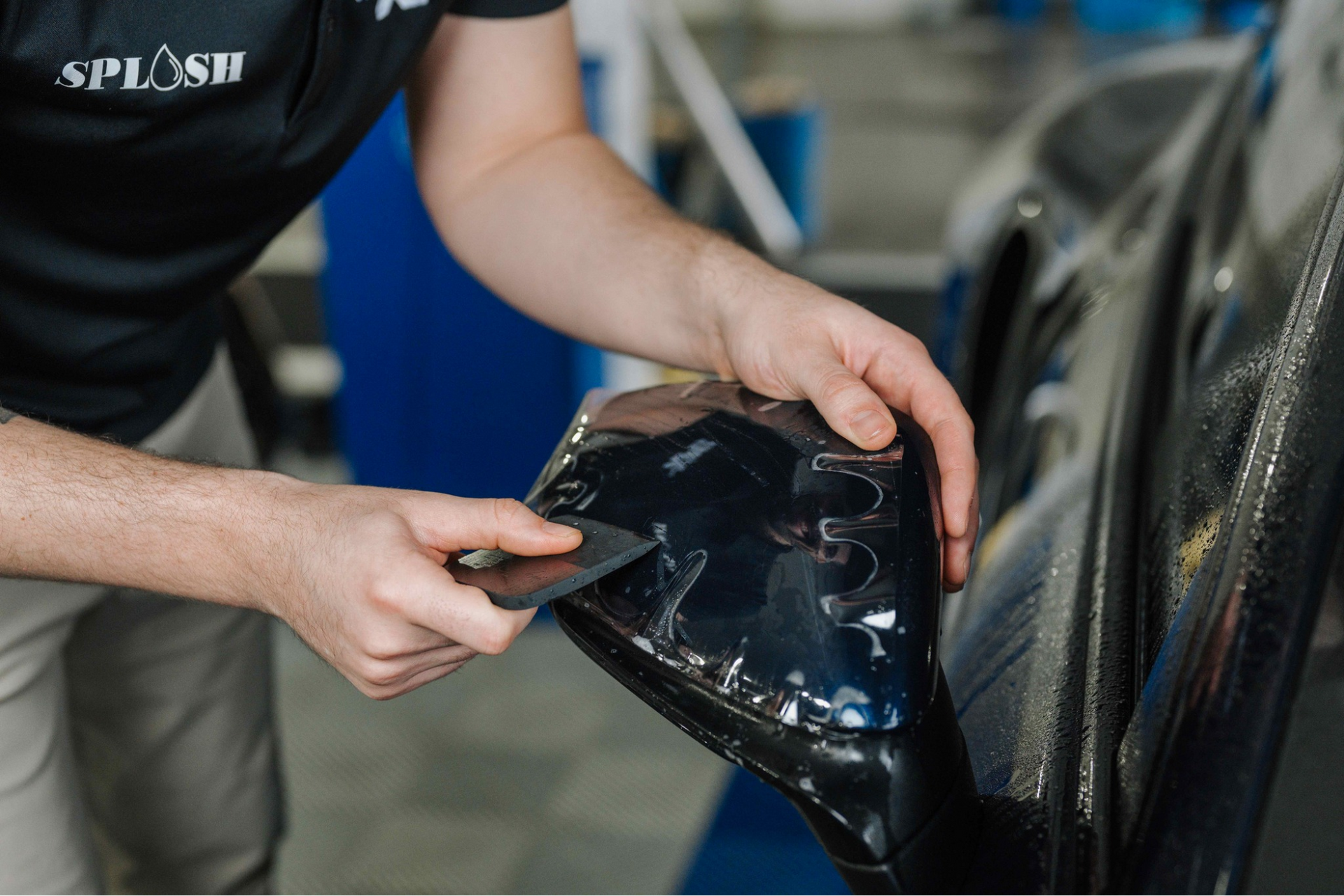
Frequently Asked Questions
Can you mix gloss and matte PPF on the same car?
Technically, yes, but it rarely looks intentional. Most people choose one finish for consistency. Some creative applications use different finishes for accents, but this requires careful planning and experienced installation to make transitions look purposeful.
Does matte PPF make my car look older or cheaper?
Not at all. High-quality matte PPF makes cars look more expensive and exclusive. It's associated with luxury and custom work. Poor quality films can look chalky, which is why professional installation matters.
Will gloss PPF make my paint look too shiny or fake?
Quality gloss PPF matches your original paint's shine almost exactly. It usually makes paint look better by filling tiny imperfections. Cheap films can look plasticky - another reason to choose installers carefully.
Can I change from gloss to matte PPF later?
Yes, but it requires removing existing film and installing new film. You pay for installation twice, so it's worth making the right choice initially. Proper removal won't damage your paint.
How long does each type last?
Both should last 7-10 years with proper care. Longevity depends more on film quality and installation than finish type. Environmental factors and maintenance also play roles.
Get Expert Help Selecting the Right PPF
Choosing between gloss vs matte PPF comes down to personal style and how you want your car to make you feel. Both provide incredible protection - the difference is the statement you want to make.
Love that showroom-fresh look? Gloss PPF makes your paint look better than ever. Prefer sophisticated, understated vibes? Matte PPF might be perfect.
Ready to see how gloss vs matte PPF would look on your car? At Splash Hand Car Wash and Detail, we'll walk you through samples and help you make the choice you'll love for years.
Contact us today to schedule your paint protection film consultation. Let's protect your investment and give it the finish it deserves.

